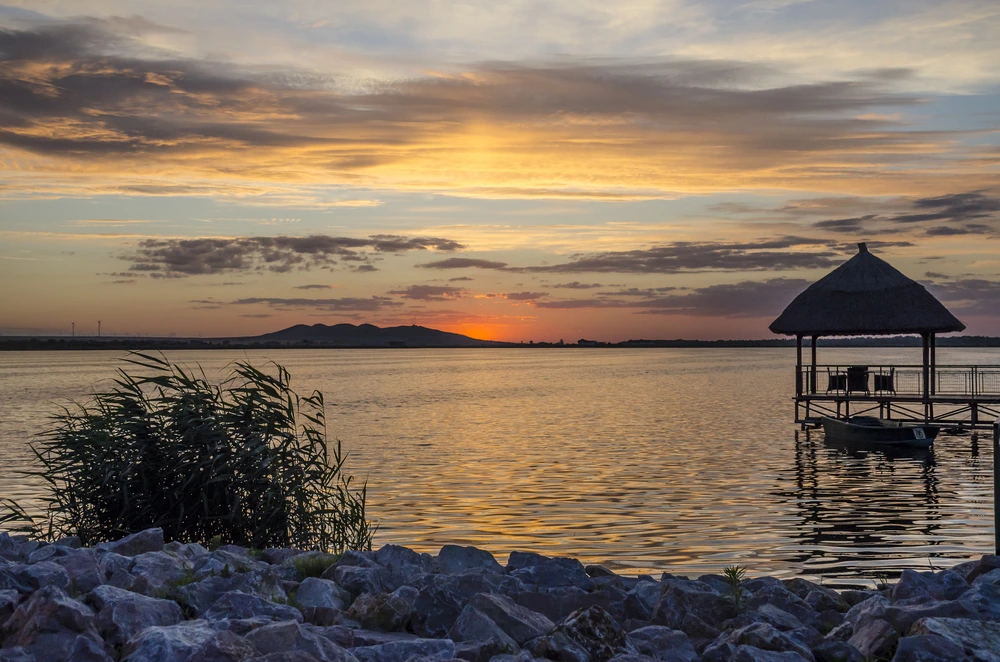Cuprins
Murighiol, the town with a poetic name, hides within its borders a universe of land surrounded by water, where nature writes stories in emerald and azure colors. Situated in the heart of the Danube Delta, this picturesque commune in Tulcea County is an invitation to discovery, a place where time has a different measure and flows shaped by the rhythms of the great river and the tranquility that envelops the landscapes.
We invite you to join us on an imaginary journey to this land between the waters, where nature, culture and traditions have forged a place of breathtaking beauty, unrivaled in Europe.
- Geographical location and characteristics of Murighiol
- Murighiol – a brief history
- How to get to Murighiol
- Sights to visit in the Murighiol area
- Activities you can do in Murighiol area
Geographical location and characteristics of Murighiol
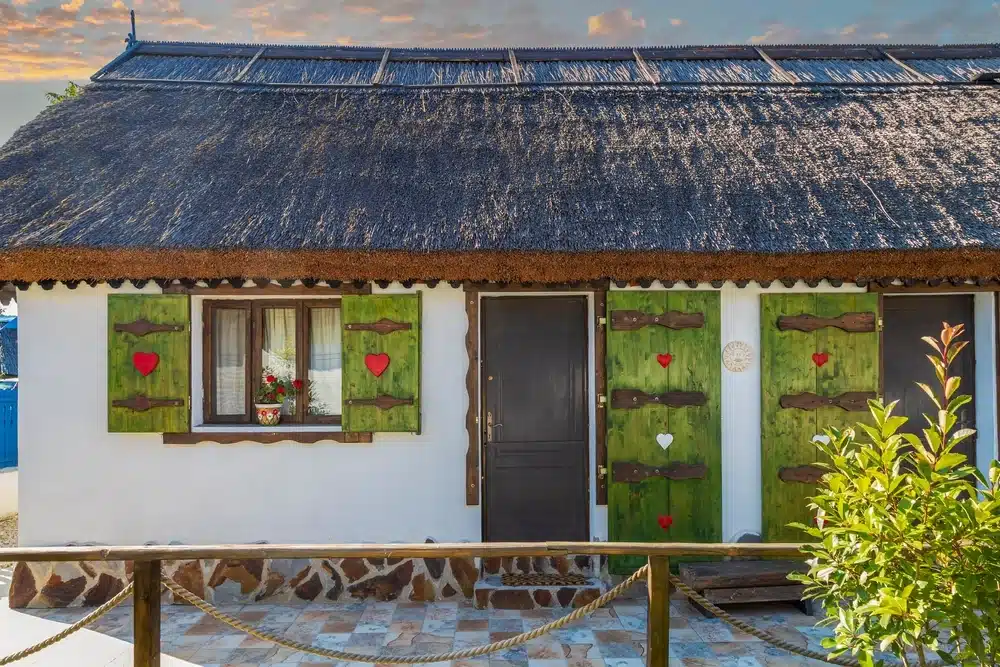
Lipovenetian house in Murighiol
The name of the locality was born from the union of two Turkish words: “mor” – purple, violet and “göl” – lake, terms that describe the nuances of the water of Lake Razim, which, under the rays of sunset or sunrise, takes on purple reflections.
Moreover, in ancient times, when the Razim-Sinoe lagoon complex was a bay of the Black Sea, Murighiol was not a lake but a stretch of salt water. The Romans called it Halmyris or Salmorus, which translates as ‘salt water’, and on maps dating back over 200 years, the locality was known as Sărăria or Sărătura.
Today, the commune of Murighiol is strategically located on the Sfântu Gheorghe inlet, being bordered to the north by the communes of Mahmudia and Crișan, to the south by the Black Sea, to the west by the Nucarilor Valley, and to the east by the administrative territory of Sfântu Gheorghe commune.
Its varied relief reveals fragmented hills in the north, with steep slopes to the west and a low plain area to the south, as far as the shore of Razim Lake. The differences in altitude are spectacular, ranging from just 2 meters in the lowlands to 186.9 meters in the highest nearby hilly formations.
The current locality is composed of the villages: Murighiol, Uzlina, Colina, Dunavățu de Jos, Sarinasuf, Dunavățu de Sus and Plopul. Murighiol, the village of Murighiol, is located in the northern part of the commune, between Lake Murighiol and Lake Sărătura, in a relatively high area, offering an impressive view of the surroundings.
The special geographical location, at the confluence of the Danube and the sea, gives Murighiol its special charm, being a point of attraction for all lovers of unique explorations.
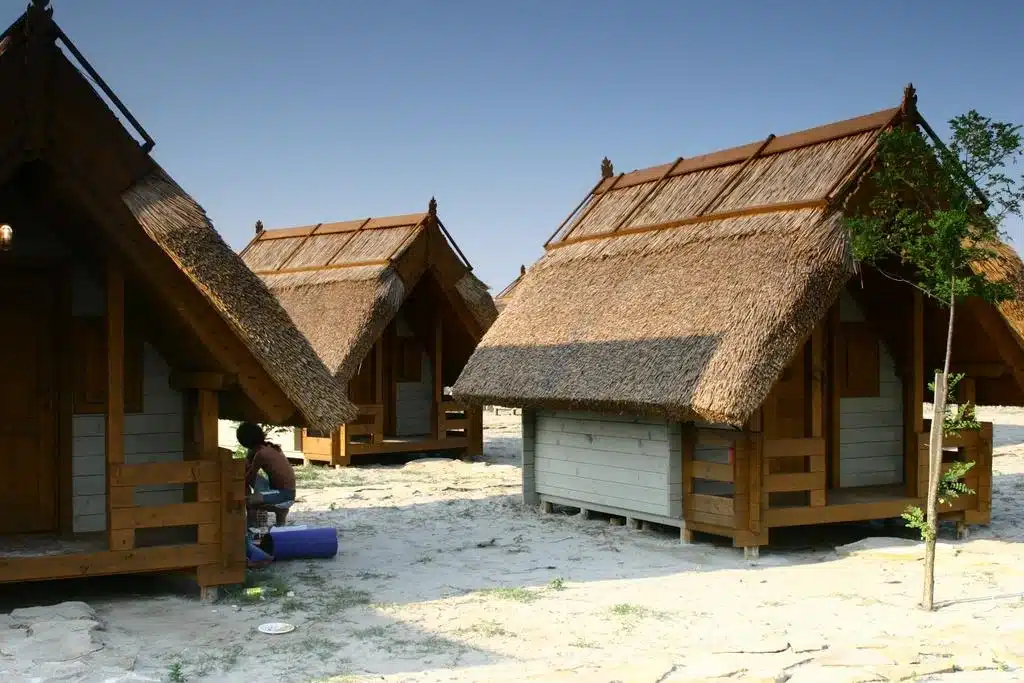
Green Dolphin complex cottages
👉 For a successful vacation in the Danube Delta, choose the Green Dolphin Camping complex, which offers cozy and cozy cottages or tent pitches in the camping space, depending on your preferences.
Murighiol – a brief history
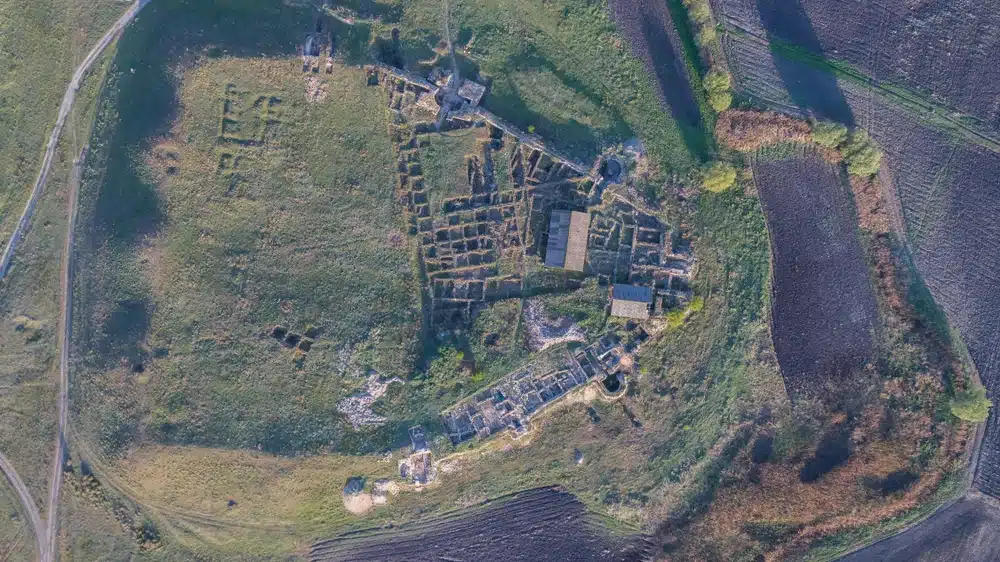
Halmyris, aerial view
Today’s Murighiol has its roots in the distant past, having been built on the site of the ancient Thracian port town of Halmyris.
Situated at the mouth of the Sf Sf Sfantu Gheorghe Arm, the settlement was a leading strategic and military center in the region, with a history that begins in the 4th century BC and continues until the 7th century AD.
The trapezoidal shape of the fortress, protected by a defensive system of 15 towers and a defensive wave, reflects the mastery of ancient engineering.
In addition to the military fortification, Halmyris was also home to a Roman civilian settlement known as the vicus classicorum – ‘sailors’ village’, a unique name in the Roman Empire, according to inscriptions found here.
The Roman fleet Classis Flavia Moesica, which patrolled the waters of the Danube, used this location as a logistical base for military operations and transportation. This explains the important strategic role of Halmyris in the administrative and military coordination of the region.
A moment of great significance for the history of Christianity in Dobrogea was the discovery, in 2000, of an episcopal basilica within the archaeological site.
In the crypt beneath the altar were found the remains of the priest Epictetus and the monk Astion, martyrs of early Christianity, whose lives are described in the hagiographical collection Acta Sanctorum. They are the oldest Christian martyrs attested in Dobrogea.
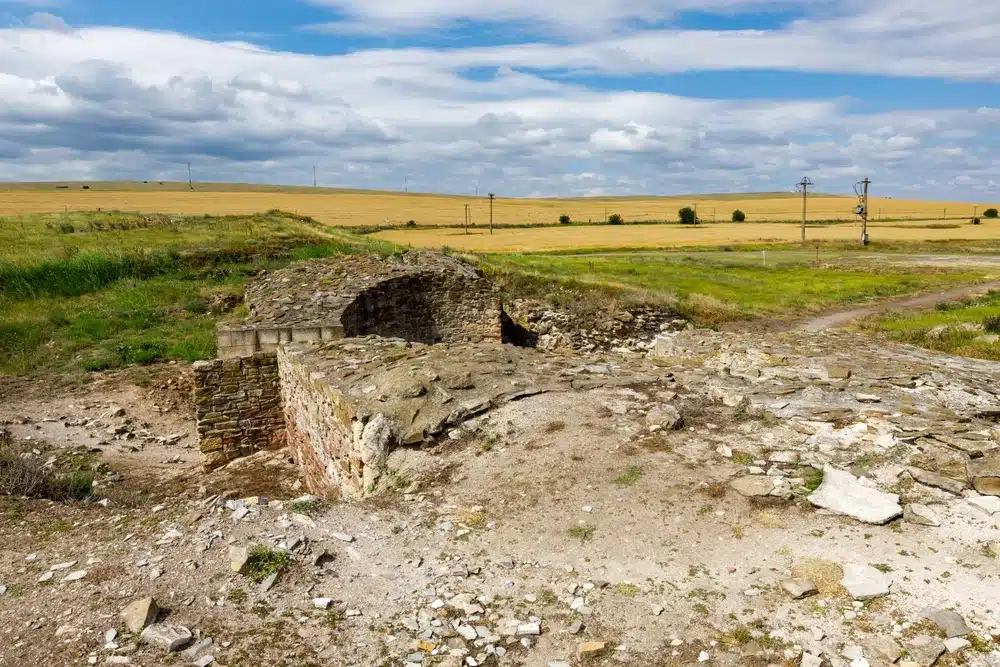
Part of the ruins of Halmyris
Over the centuries, Murighiol has received successive waves of populations. In the 19th century, the village was inhabited by Turks and Tatars, many of them refugees from the Crimean War.
After the War of Independence, their place was taken over by Ukrainian Cossacks from other flood-stricken villages on the delta.
Later more Ukrainians settled here, contributing to the ethnic and cultural diversity of the area.
In 1883, the village modernized with the construction of the town hall and church, followed by the opening of a school in 1884.
By the end of the 19th century, Murighiol already had a thriving community of 692 Ukrainians and 102 Tatars, laying the foundations of a distinct local identity where the history and culture of different eras meet.
How to get to Murighiol
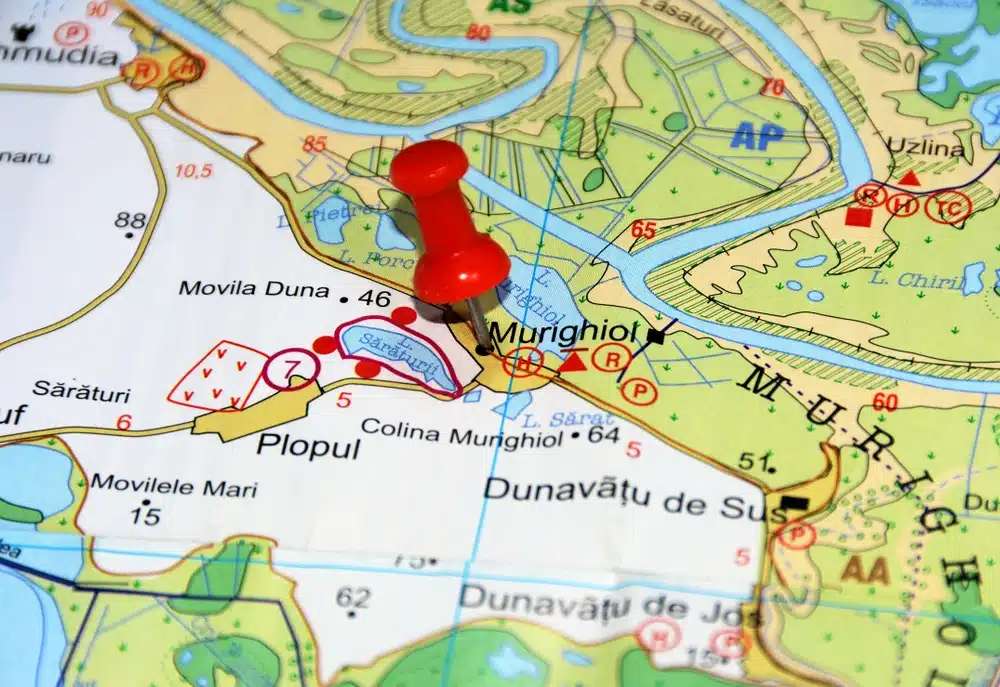
Murighiol on the map
Situated about 38 km from Tulcea, Murighiol enjoys good connections with the rest of the country, regardless of the means of transportation you choose.
By car
If you prefer to travel by car, Murighiol is easily accessible via a network of well-maintained roads. From Tulcea, follow the National Road DN22 (Tulcea – Constanța), and at the Cataloi junction, turn onto the DJ222C towards Murighiol.
The road is asphalted and offers picturesque scenery with lakes, canals and reedbeds characteristic of the Danube Delta. The distance of 38 km can be covered in about 40 minutes.
From Bucharest, the journey to Murighiol is about 290 km and takes around 4-5 hours, depending on traffic. The recommended route is Bucharest – Fetești – Hârșova – Tulcea – Murighiol, using the A2 highway until Drajna and then DN21/DN22.
By train
Murighiolul has no train station and the nearest train station is in Tulcea. Direct trains from Bucharest to Tulcea average 6 hours and connections are frequent during the tourist season. From Tulcea, you can continue your journey to Murighiol by bus or taxi.
By bus
Buses and minibuses run between Tulcea and Murighiol, most of which depart from the main bus station in Tulcea. The journey takes about 45 minutes and is an economical and comfortable option. Also, from cities like Bucharest or Constanța, you can find buses that go directly to Tulcea, where you can change for Murighiol.
On the water
For an authentic experience, you can also reach Murighiol by water. If you’re already in the Delta, there are canal or lake transportation options, using private boats or local boats. Murighiol is an important starting point for exploring the Delta, as well as a link between villages and nature reserves.
Distances to Murighiol
- Tulcea – Murighiol: 38 km (40 minutes by car);
- Bucharest – Murighiol: 290 km (4-5 hours by car);
- Constanta – Murighiol: 130 km (2-2.5 hours by car);
- Galați – Murighiol: 120 km (2 hours by car).
Sights to visit in the Murighiol area
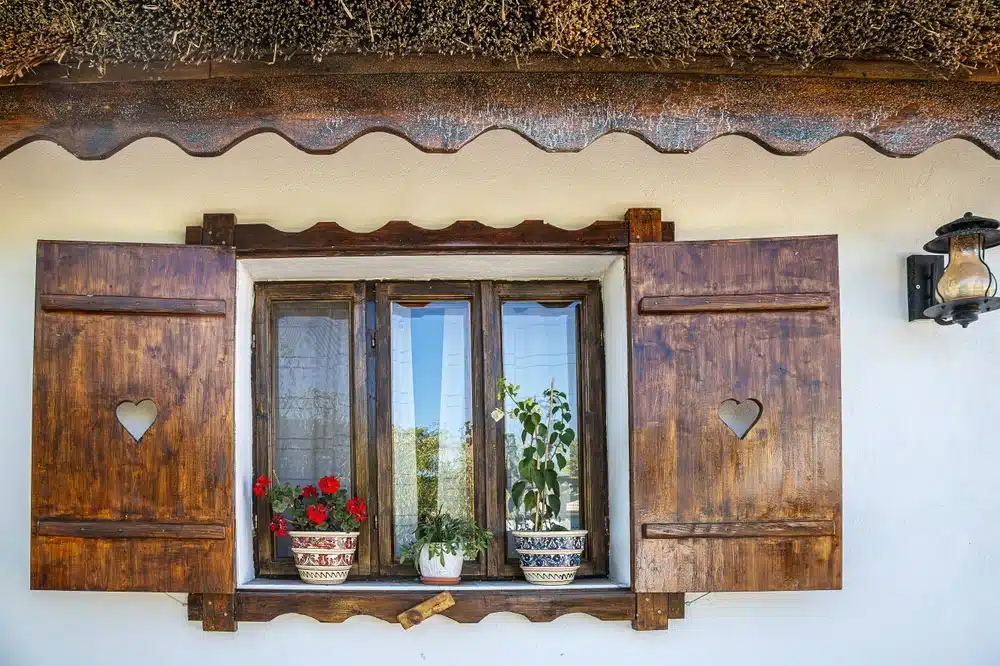
Window of a traditional Lipovenetian house in Murighiol
Those who come here have the opportunity to explore the region’s spectacular landscapes and delve into the depths of a bimillenary history. Here’s what to visit when in Murighiol:
Citadel of Halmyris
The fortress of Halmyris, located on the right bank of the Sfantu Gheorghe Arm, has its roots in the 2nd century AD and played an important role as a major port of the Danube fleet. After a century, the place became an important center for the spread of Christianity.
On August 15, 2000, a hidden crypt was discovered here, where the bones of two martyrs of the region were found: Epictetus the priest and Astion the monk. They were killed for their faith in 290. Their names are known thanks to an inscription in Greek on one of the walls of the crypt.
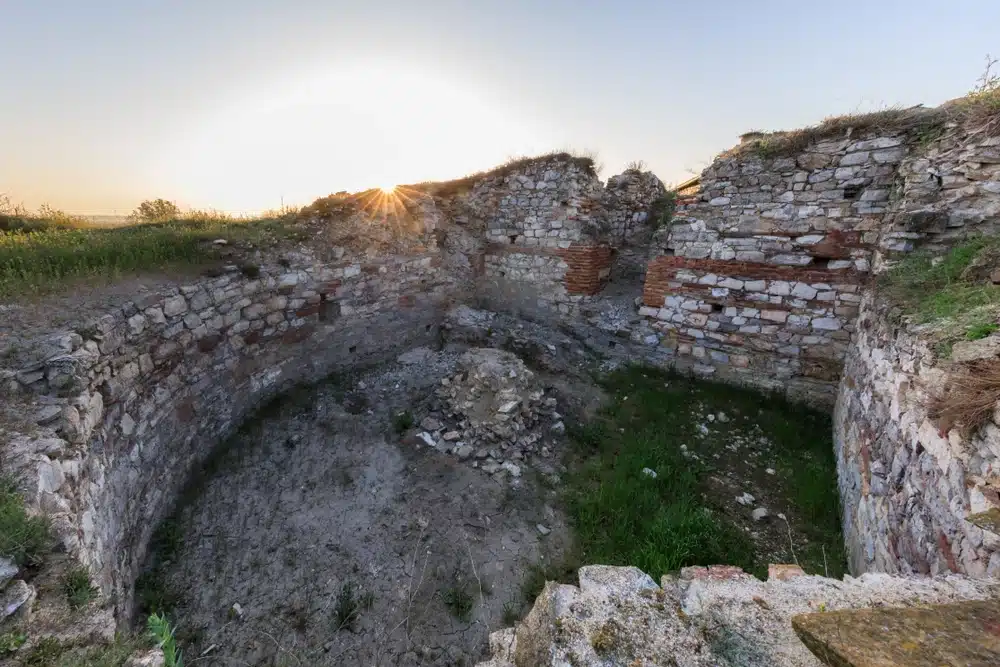
Roman ruins at Halmyris
The archaeological site of Halmyris is open to the public and offers an immersive experience. Visitors can explore the ruins of the fortress, including the defensive structures and episcopal basilica.
Informative panels detail the history of the site, and local guides are on hand to provide details about the archaeological finds.
The fortress is only a few kilometers from the center of Murighiol and is accessible by car. The visit can be combined with a trip to the Danube Delta, happily combining nature with the history of the area.
👉 And while you’re in Tulcea County, don’t forget that you have the opportunity to visit other places of historical importance in the area. Read more in the article Enisala Fortress – the ancient border between East and West.
Halmyris Monastery
The Halmyris Monastery, an Orthodox place of worship dedicated to the memory of the martyrs Epictetus and Astion, was built to honor their sacrifice.
The monastery is not only a place of prayer, but also a symbol of the Christian tradition of Dobrogea, and is of particular importance in preserving the history of the region.
The foundation stone was laid on July 8, 2002, initially with the intention of building a cathedral that would be the largest in the whole Dobrogea.
After a five-year hiatus, work resumed and the consecration of the church in the basement of the future place of worship took place on July 8, 2007. Fundraising activities are currently continuing to complete the upper level of the church.
Around the church were built two bodies of cells, which include an archchancellor’s house and a trapeza, offering hospitality and shelter to those who come to pray or meditate.
Murighiol salt flats

Great Egret
The Murighiol salt marshes are a nature reserve of national importance, having the status of a protected area, intended for the conservation of bird and plant species.
The natural area encompasses a variety of habitats including lakes, ponds, depleted meadows, grassland and reedbeds, which provide ideal feeding and nesting conditions for a wide variety of birds.
Among the bird species that inhabit the area are the marsh chira, the marsh lapwing, the reed bunting, the pied pied, the winter swan, the winter swan, the white stork, the white stork, the common pelican, the purple heron, the purple heron, the egret, the marsh pipit and the reed warbler.
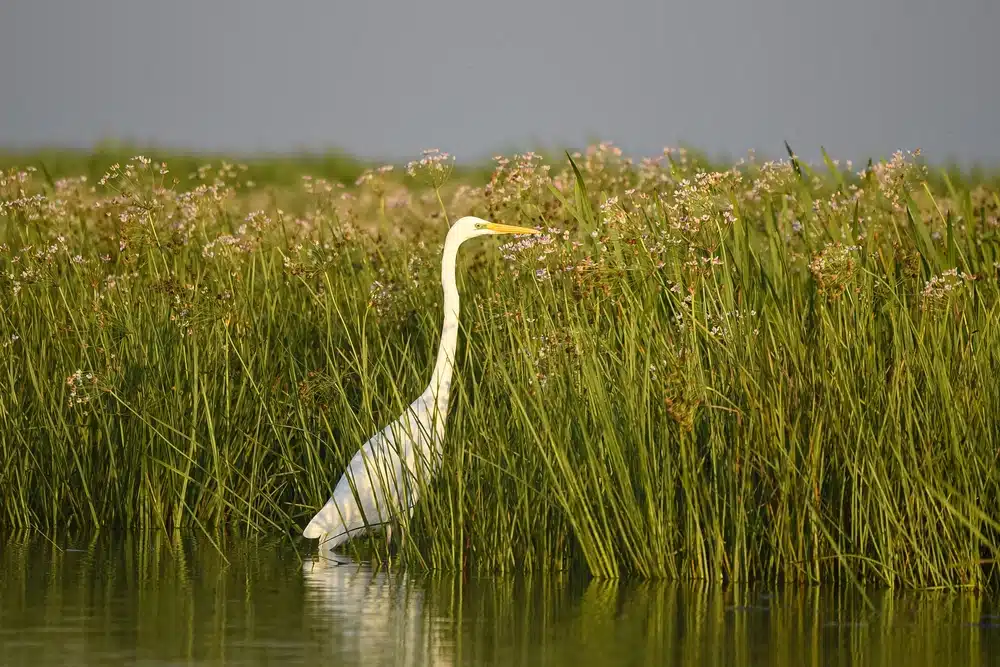
Egretă mare
The Murighiol salt flats are also home to a rare and protected flora, with plant species thriving in the region’s soils.
The museum offers a real incursion into the world of traditions and crafts from the villages of Murighiol, being a particularly important place for the preservation and promotion of the local cultural heritage.
The museum’s exhibits include objects representative of folk art, such as icons, pottery, wood and metal pieces, decorative fabrics, traditional costumes, fishing tools and many others.
The museum’s heritage also reflects the cultural pattern of ethnic coexistence specific to the area, a testament to the diversity of populations that have lived together for generations.
The Romanians, Ukrainians, Russian-Lipovans, Turks and Tatars, each with their own traditions and customs, have contributed to a common cultural identity, and the museum brings together elements from each of these cultures.
Activities you can do in Murighiol area
Whatever the season, the Danube Delta and Murighiol commune are perfect destinations for all those who want to have an exceptional stay. Here, visitors of all ages can find exciting activities to complement their vacation. Here are some of the experiences you can have in this special area:
Boat trips in the Delta
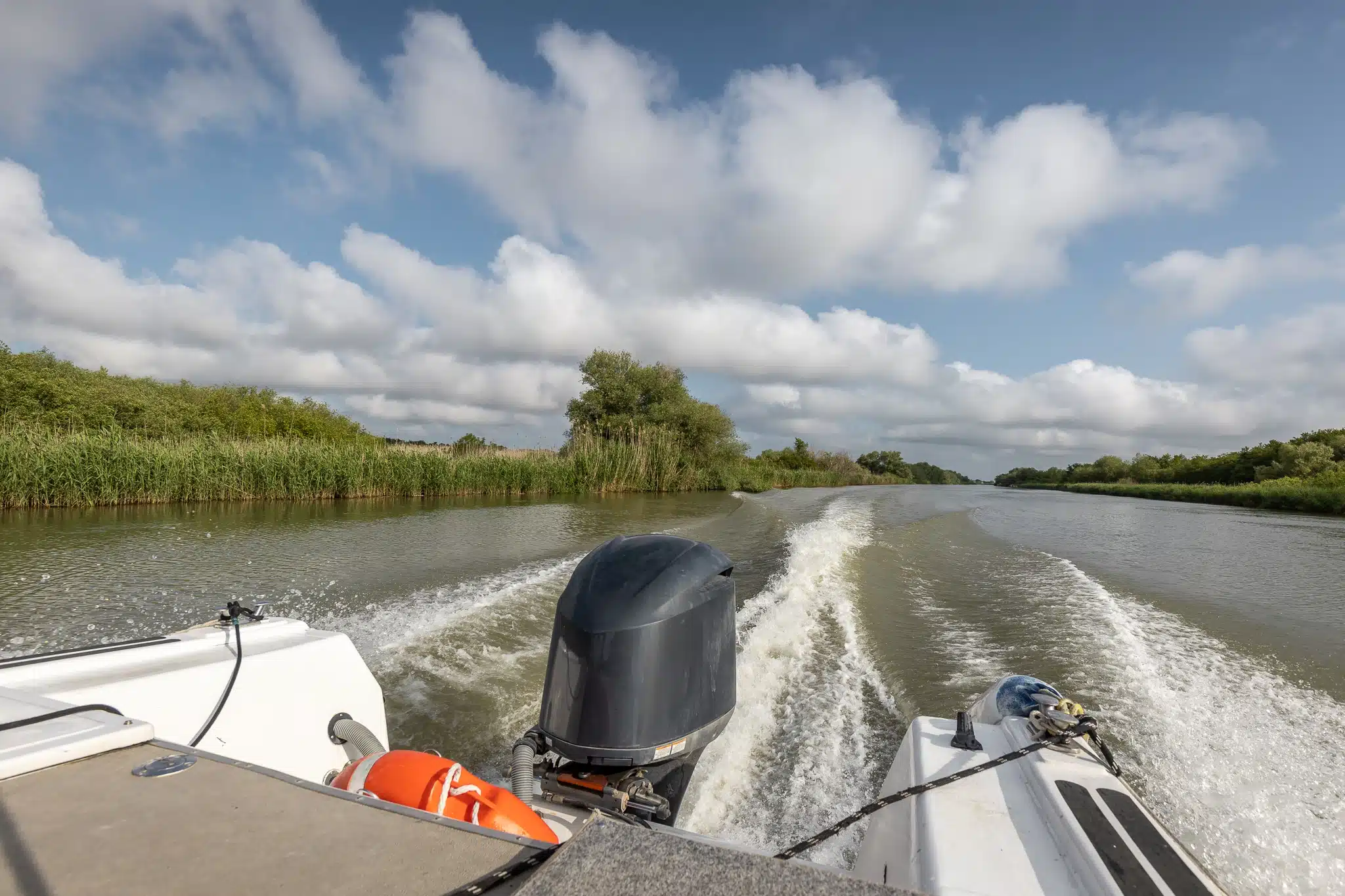
Boat trip in the Danube Delta
Visitors who want to discover the natural beauty of the Delta will be fascinated by the unique landscapes and extraordinary biodiversity.
The Danube Delta, the second largest delta in Europe, is home to astonishing flora and fauna, with rare species of plants and animals, making it a real hotspot for nature lovers and birdwatchers.
Organized group tours with experienced local guides are recommended to explore this delicate and complex ecosystem.
They know the territory very well and can guide tourists through the most beautiful and inaccessible corners of the region while providing valuable information about the local flora and fauna.
Sport fishing
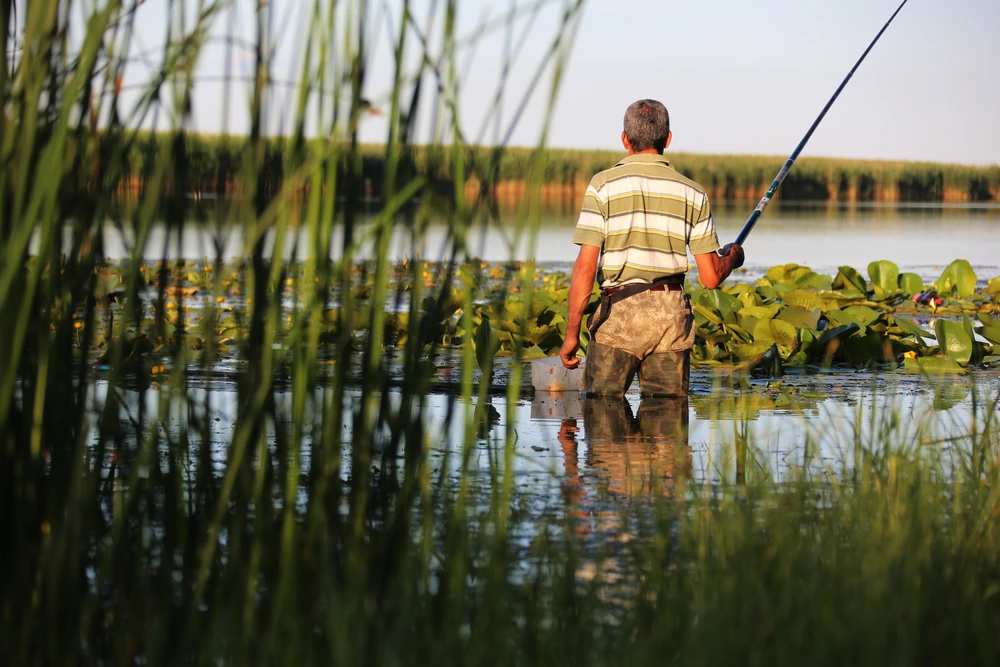
Sport fishing in the Danube Delta
The Danube Delta is known for its unique ecosystem, a haven for dozens of fish species, including rare and protected species.
The waters here are populated by an impressive variety, from flounder and common carp to pike, catfish and perch.
Sport fishing in Murighiol is not only a recreational activity, but also a way to connect with nature.
On the edge of the calm waters of the Delta, fishing becomes a real meditation amid the surrounding landscapes. In addition to potentially impressive catches, experienced and inexperienced anglers can observe the wild birds flying around and enjoy the tranquility that reigns over nature.
Cycling, boating or kayaking
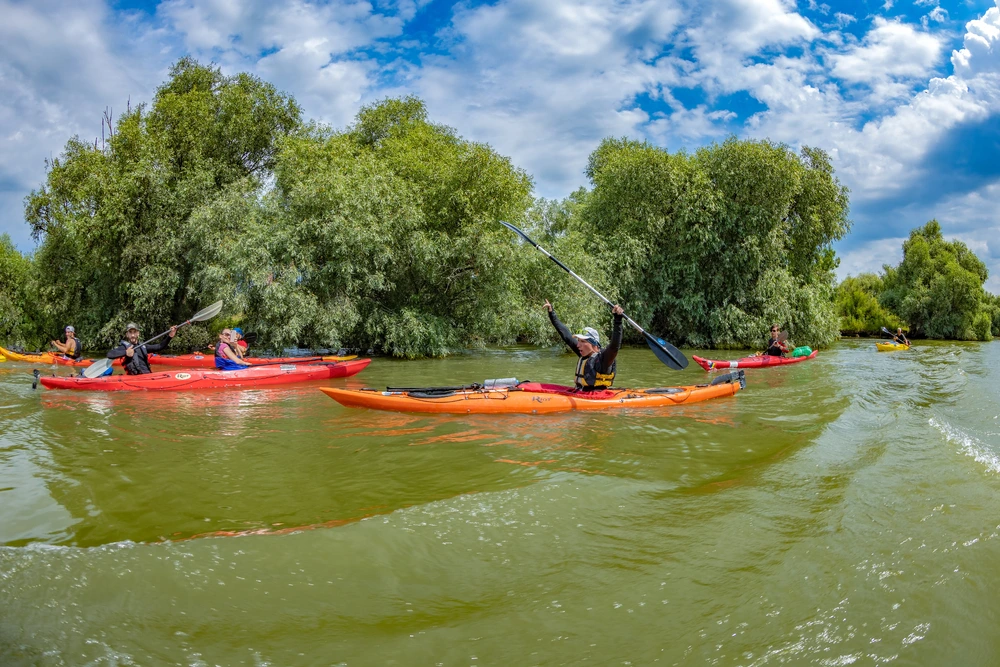
Kayaks on Lake Murighiol
For cycling enthusiasts, Murighiol and its surroundings are a real paradise. There are trails leading through picturesque villages, forests and plains, allowing cyclists to enjoy the area’s sights in a relaxing and active way.
Cycling on the quiet roads around the village is a unique and healthy way to explore the Delta, admiring the local flora and fauna as well as the daily life of the inhabitants.
Similarly, a boat or kayak trip can be the experience you’ve been looking for. With the help of a local guide, nature lovers can navigate the Delta’s less accessible spots, witnessing a world that has remained unchanged for thousands of years.
👉 Whether you choose boating, biking or kayaking, the range of experiences on offer at the Green Dolphin complex will help you truly discover the charm of the Danube Delta and fully enjoy all it has to offer.
Every corner of this beautiful locality bears the stamp of time, traditions and spectacular biodiversity that define the Danube Delta.
Whether you choose to enjoy the wild landscapes, discover its historical identity or experience the local hospitality, Murighiol rewards you with authentic moments, giving you the chance to escape the hustle and bustle of everyday life and rediscover the joy of simple but precious things.
Photo source: Green Dolphin, Shutterstock [1, 2, 3, 4, 5, 6, 7, 8, 9, 10]

